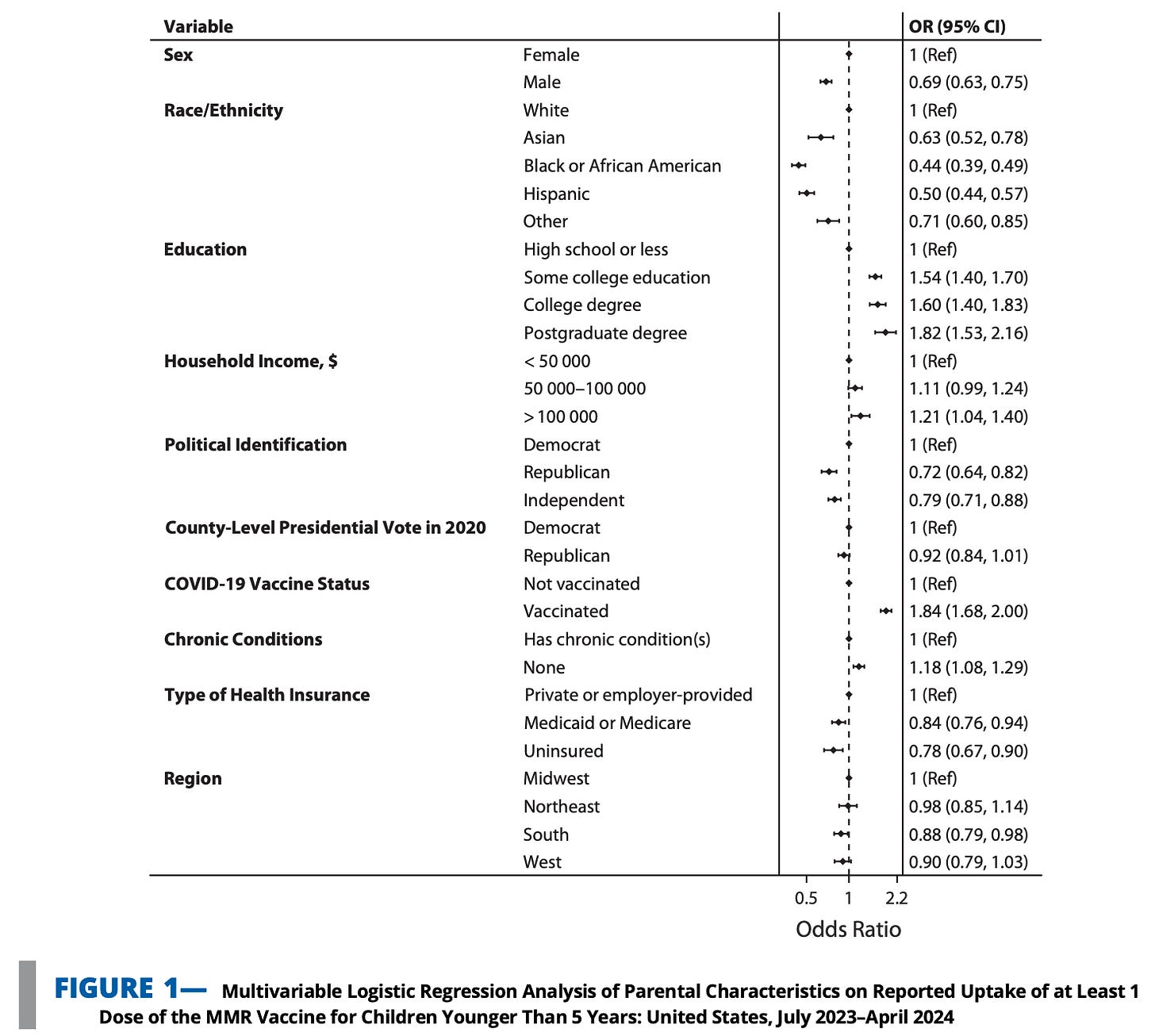The Decay of Measles Vaccination Rates
(and Mumps and Rubella)
As has become en vogue to bring back vaccine-preventable illnesses, some assume the vulnerable populations are merely small pockets in isolated rural communities across the country. The CDC, after all, continues to report vaccination rates upwards of 90% – while not quite herd immunity, it sounds reassuring. The CDC data, however, are a "look back", as they are derived from children at kindergarten entry and can only reflect vaccination trends from 5-odd years ago.
In contrast, this report picked up by news outlets offers a starkly different view: an unvaccinated population approaching 30%. Uptake of MMR vaccination declines from even that low bar in Republican, Black, Hispanic, and under-educated populations:
Now, the good news: these data are full of holes.
These are mini-surveys slipped into SurveyMonkey between 2023-2024 and will suffer from response and recall bias. The dramatic difference between male and female respondents is one of the best clues regarding potential inaccuracy of these data. Then, children under 5 do not typically receive their first MMR vaccination until after 12 months, and ought to represent approximately 20% of the surveyed "under 5" population. These children are still absolutely at risk for measles infection, but it should not be assumed they otherwise have unvaccinated status, or will not ultimately receive their MMR vaccine.
The only insight potentially gleaned from these data, precarious as they may be, may solely be from where differences in demographics appear to exert oversize influence vaccination status.

